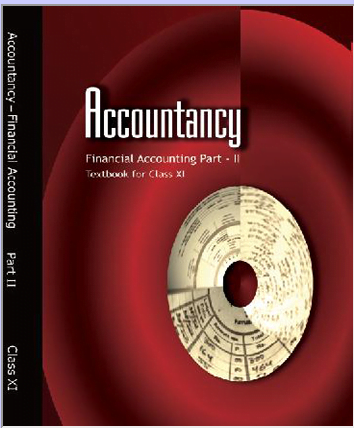Financial Accounting Part -2, 10+1 NCERT E-Book, English
Chapter 9: Financial Statements – I:
You have learnt that financial accounting is a well-defined sequential activity which begins with Journal (Journalising), Ledger (Posting), and preparation of Trial Balance (Balancing and Summarisation at the first stage). In the present chapter, we will take up the next step, namely, preparation of financial statements, and discuss the types of information requirements of various stakeholders, the distinction between capital and revenue items and its importance and the natureof financial statements and the preparation thereof.
Chapter 10: Financial Statements – II:
In chapter 9, you learnt about the preparation of simple final accounts in the format of trading and profit and loss account and balance sheet. The preparation of simple final accounts pre-supposes the absence of any accounting complexities which are normal to business operations. These complexities arise due to the fact that the process of determining income and financial position is based on the accrual basis of accounting. This emphasises that while ascertaining the profitability, the revenues be considered on earned basis andm not on receipt basis, and the expenses be considered on incurred basis and not on paid basis. Hence, many items need some adjustment while preparing the financial statements. In this chapter we shall discuss all items which require adjustments and the way these are brought into the books of account and incorporated in the final accounts.
Chapter 11: Accounts from Incomplete Records:
We have so far studied accounting records of firms, which follow the double entry system ofbook keeping. This gives us an impression that all business units follow this system. However, in practice, all firms do not maintain accounting records strictly as per the double entry system. Many small size enterprises keep incomplete records of their transactions. But, they also have to ascertain the profit or loss for the year and the financial position of the firm as at the end of the year. This chapter deals with the ascertainment of profit or loss and financial position of the firm that have not been maintaining records as per double entry bookkeeping or whose records are otherwise incomplete.
Chapter 12: Applications of Computers in Accounting:
Computer technology and its usage have registered a significant development during the last three decades. Historically, computers have been used effectively in science and technology to solve the complex computational and logical problems. They have also been used for carrying out economic planning and forecasting processes. Recently, modern day computers have made their presence felt in business and industry. The most important impact of computers has been on themanner in which data is stored and processed within an organisation. Although manual data processing for Management Information System (MIS) has been quite common in the past, modern MIS would be nearly impossible without the use of computer systems. In this chapter we shall discuss the need for the use of computers in accounting, the nature of accounting information system and the types of accounting related MIS reports.
Chapter 13: Computerised Accounting System:
In chapter 12, you have learnt about the need for use of computers in accounting the nature and use of accounting information system. In this chapter, we shall discuss the nature of computrised accounting system, its advantages, limitations and sourcing.
Chapter 14: Structuring Database for Accounting:
In the earlier chapters, you have already learnt that accounting of transactions are documented with vouchers. Let us consider a few accounting transaction to understand as to how these vouchers are used. On April 01, 05 M/s Kshipra Computers commences business with initial capital of Rs.5,00,000, which is deposited into bank. Recall the journal entry that is recorded using manual accounting system.
Chapter 15: Accounting System Using Database Management System:
In chapter 14, you have learnt about the fundamentals of creating a database design in the context of accounting system. This chapter deals with the basics of MS Access for implementing the databases and specifically deals with implementation of accounting databases, the design of which has been shown, described and discussed in chapter 14 as Model-I and Model-II. The accounting database design has been discussed below in terms of its implementation modalities in the context of MS Access.























